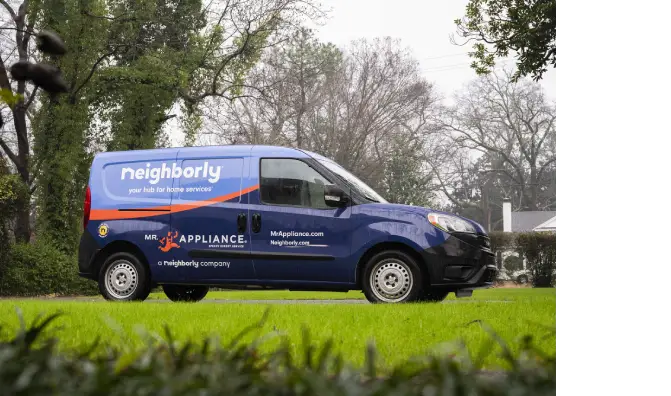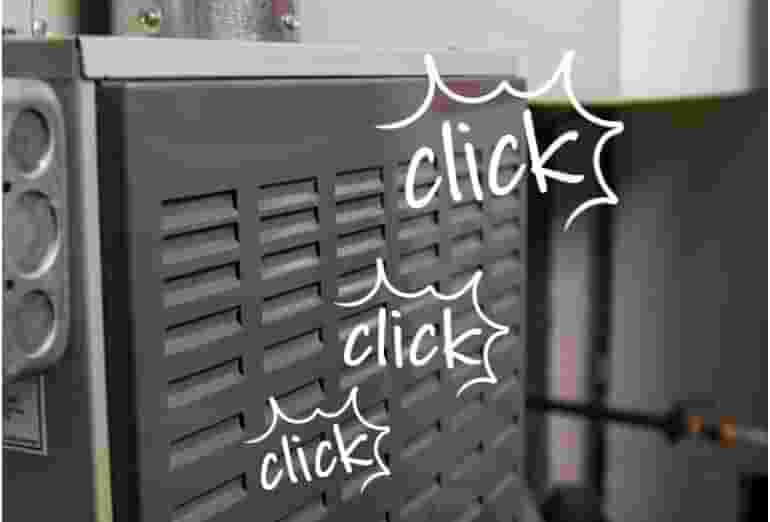When your stove or oven stops working, it can disrupt your entire day.
Equally frustrating is when your oven appears to be working but isn’t heating properly — which you don’t discover until after you realize the dinner you’ve prepared for the evening isn’t cooked. Or you try to heat up a pot of water on the stove and only hear clicking — no flame.
The most reliable remedy for your oven or stove issue is to call your local Mr. Appliance for expert oven repair and range repair service.
If your gas or electric oven isn’t functioning properly, contact Mr. Appliance today.
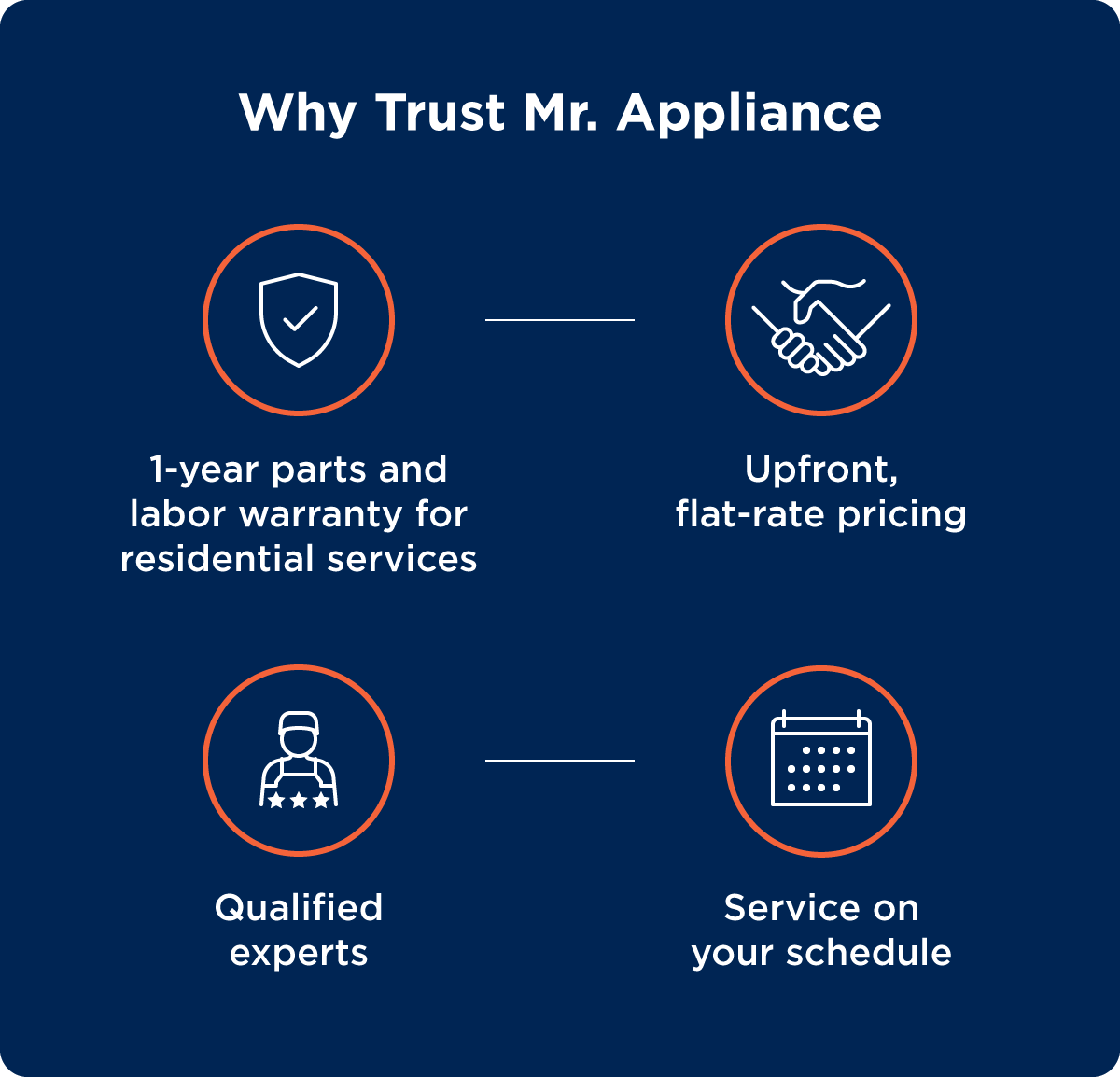
Types of Ovens and Stoves We Service
Mr. Appliance repairs and services ranges, stoves, ovens, and cooktops. We’re also well-versed in gas stove repair and electric range repair services.
Here are the types of ovens and stoves we service:
- Gas cooktops
- Gas ovens
- Gas ranges
- Electric cooktops
- Electric ovens
- Electric ranges
- Wall ovens
- Double ovens
Stove and Oven Brands We Commonly Service
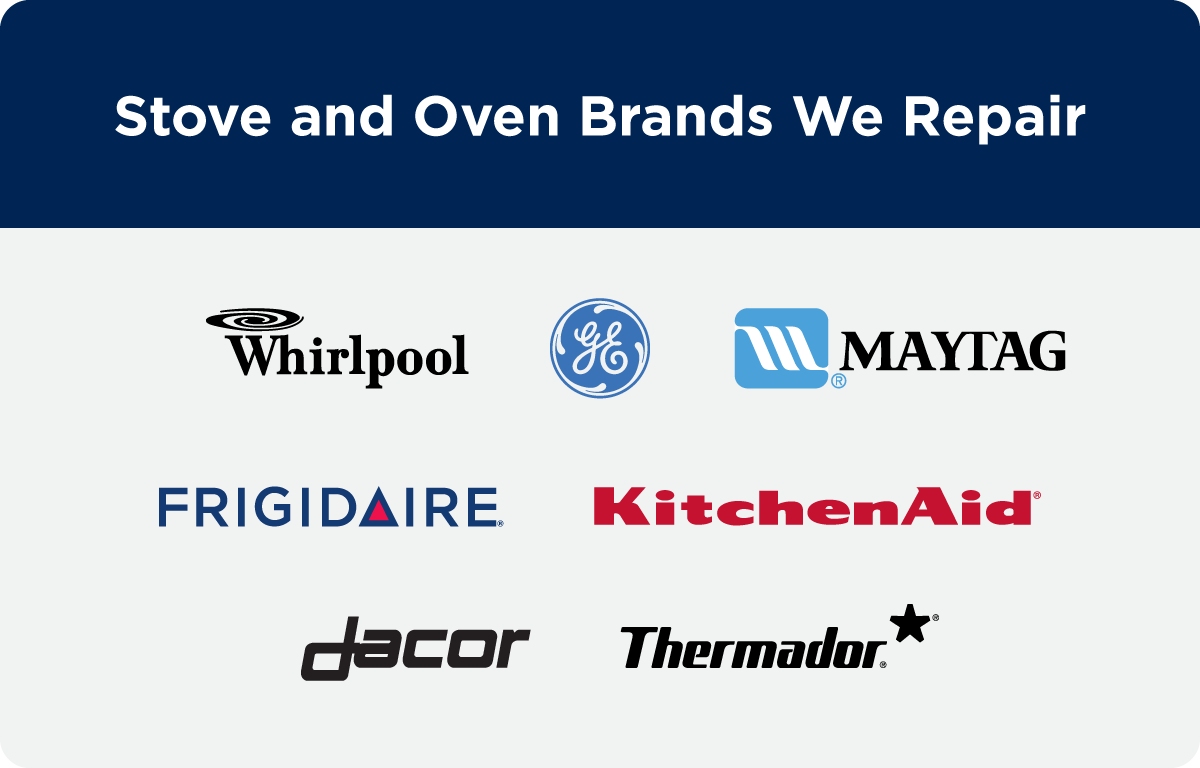
From household names to niche favorites, our skilled professionals service a broad range of brands. These are the most common brands we service:
- Whirlpool
- Maytag
- Dacor
- Frigidaire
- GE
- KitchenAid
- Thermador
Oven and Stove Parts We Commonly Replace
We understand that a functioning kitchen hinges largely on an oven and stove that is working properly. Your stove and/or oven can stop working for a variety of reasons. Here are some of the most common parts we replace:
Oven:
- Thermostats
- Gaskets
- Controller boards
- Self-cleaning latches
- Temperature sensors
- Heating elements
- Igniters
- Bake igniters
- Dials
Range and Cooktops:
- Thermostats
- Gaskets
- Burners
- Switches
- Relays
- Spark electrodes
- Ignition wires
- Controller boards
- Self-cleaning latches
- Temperature sensors
- Heating elements
- Igniters
- Valves
- Spark modules
- Safety valves
- Dials
Oven or Stove Not Working? 5 Common Issues We Fix
If there is something wrong with your stove or oven, but you’re not sure what, here are the five most common stove and oven issues we fix.
Learn how to identify and address these common malfunctions so you can get back to enjoying a functional kitchen.
1. Stove or Oven Won’t Turn On
When your stove or oven refuses to turn on, several problems may be at play.
The gas burner won’t light
For gas stoves, a common issue is a burner clicking but not lighting. The most common reason for a gas stove burner not lighting is a block in the flow of gas — typically food or other debris that has fallen off the pan while cooking. Clean up your burners, then try again.
You should also check if the burner’s igniter is clean. If not, soak a cotton swab in alcohol and clean the igniter and metal burner cap.
The electric burner won’t heat
For electric burners, a failure to turn on could stem from a faulty burner element. To diagnose, try a different burner to determine if it’s a specific burner element that’s not working or a larger issue. If the other burner doesn’t work, contact a professional.
Oven not heating
If your oven isn’t heating, the thermostat and heating elements are the most likely culprits. You may also have issues with the power supply or the appliance’s circuitry. Experienced professionals are best equipped to diagnose and address these issues.
Oven light out
If your oven light is out, you can easily replace it yourself.
- Look up what light bulb your model needs.
- Turn off the power.
- Make sure the oven is cool, and remove the baking racks.
- Locate the light bulb in the upper right or left side of the oven.
- Remove the cover and light bulb.
- Remove the old bulb and replace it with a new light bulb. Replace the cover.
- Put the baking racks back in the oven.
- Turn the power back on.
2. The Oven Door Is Stuck Closed
A misaligned or broken self-clean latch, a defective clock, or the oven control board are the common culprits of a stuck oven door.
For oven doors stuck after a self-clean cycle:
- Allow the oven to cool down entirely after a self-cleaning cycle. The door may stay locked for up to an hour as it returns to a safe temperature.
- If the door doesn’t unlock after cooling down, attempt to reset the self-clean cycle by initiating it again.
- Wait until the lock motor stops (about 15 seconds), cancel the self-clean cycle, then wait another 15 seconds as the lock motor stops running once again before trying to open the door.
For oven doors stuck with an activated lock-out feature:
- Check the display for an activated lock-out feature and deactivate it.
- For most models, press and hold the Stop/Clear or Clear/Off button for three seconds; a beep will sound, and the lock-out indicator will flash until the door is fully unlocked.
- Wait until it stops flashing before opening the door to avoid damage.
For ovens with a manual lock:
- Wait until the oven has cooled completely.
- Place your hand on the door handle, press firmly to release tension, and while pressing, move the lock to the unlocked position. The lever should move easily; don’t force it.
3. Oven Is Not Self-Cleaning
This could be caused by a defective or damaged self-clean latch switch or function selector. Try these troubleshooting steps:
- Wait for the oven to cool down.
- Reset the power.
- Inspect the oven latch for any visible signs of damage or misalignment. If you see something that doesn't look right, get in touch with a professional to replace the latch.
- Pull your range away from the wall and check the wiring for signs of wear and tear, but do not touch it. Contact a professional if anything looks odd.
- If the wiring looks fine, contact your local Mr. Appliance so one of their service professionals can inspect the range to see what is causing the issue.
4. Gas Oven Broiler Is Not Working
This is usually the result of a bad broiler igniter or valve. Typically, the broil element has failed, while the top burners have remained functional.
Inspect the broiler ignitor and valve for any signs of wear or damage. If either component looks faulty, reach out to a knowledgeable professional to replace the part.
5. Oven Not Reaching Temperature
Your electric oven may not be heating up properly because it has a bad temperature sensor or function selector. The sensor may also be touching the wall of the oven, or the oven just needs to be re-calibrated.
How To Fix Your Oven, Stove, or Range
Before you call a professional, there are a few troubleshooting steps you can go through first. Try this checklist of items and see if it resolves your issue.
Electric oven won’t turn on:
- Make sure the power cord is plugged in.
- Turn off the oven’s circuit breaker, wait 30 seconds, and then turn it back on.
- If you have fuses instead of a circuit breaker, ensure they're tightened. Replace any that have blown.
- If there are no blown fuses, unscrew the fuses providing power to the oven, wait 30 seconds, and then securely tighten them back in place.
Gas oven won’t turn on:
- Attempt to turn on one of the surface burners (or, in the case of a wall oven, the broil burner). If the burner ignites, it indicates the presence of a gas supply to the unit.
- If it fails to light, verify that the main gas shut-off valve is in the ON position, typically situated behind the range.
- Some ovens need a set clock before starting. Confirm your clock is correctly set.
The oven takes a long time to preheat:
- Make sure you’re waiting long enough. It usually takes 15 to 20 minutes to reach a temperature of 350 degrees Fahrenheit.
- Keep the oven door closed while preheating.
- Ovens with a concealed heating element (located beneath the oven floor) may require extra time for preheating.
- Large items like baking stones can also prolong preheating.
- Remove any aluminum foil used to line oven racks or the bottom of the oven. This can significantly impact preheating time, potentially affect cooking performance, and can damage your oven.
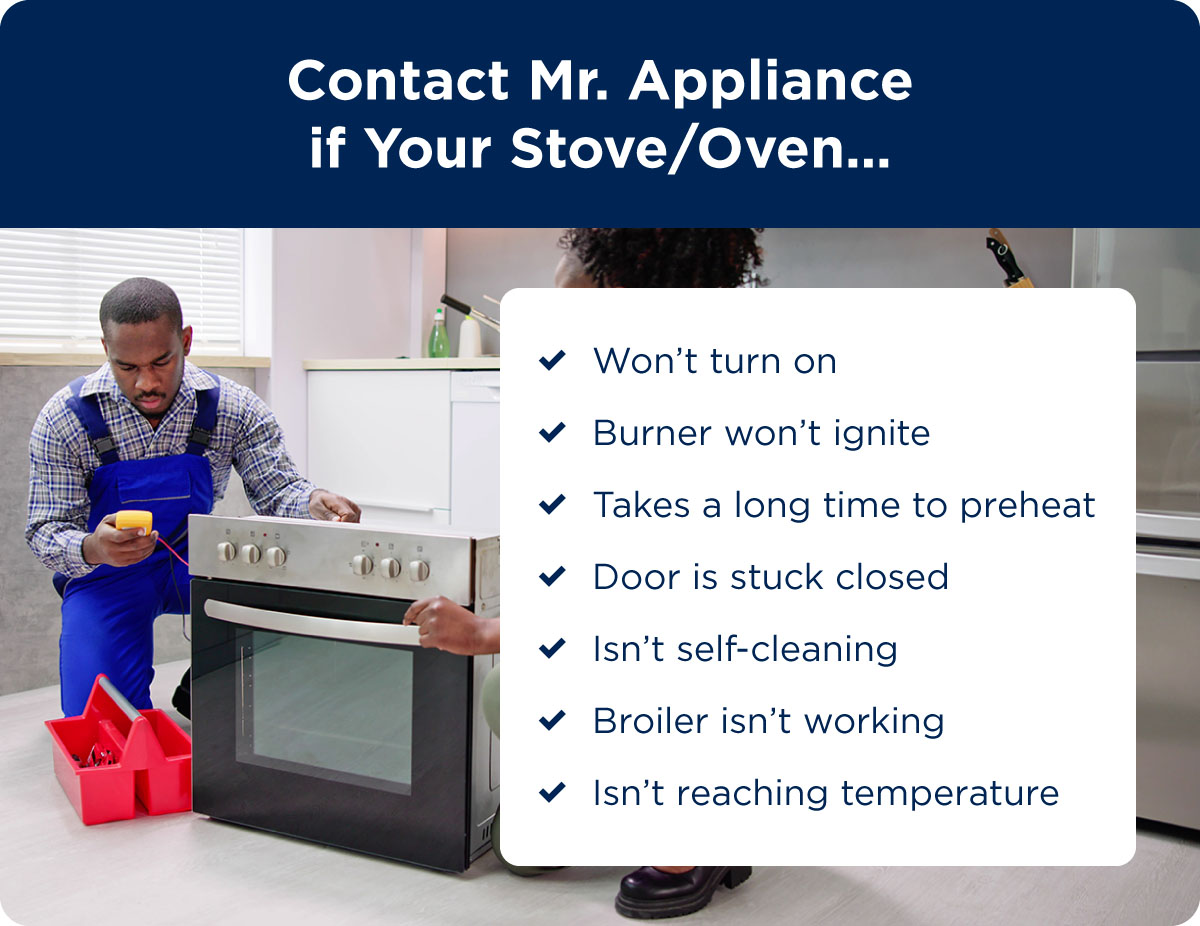
Oven Repair, Stove Repair, and Range Repair Services Near Me
If your electric or gas oven isn’t working, call your local Mr. Appliance or schedule service online to figure out what’s wrong with it. Our service professionals are available and ready to diagnose any problems with your stove, oven, or cooktop and make prompt local stove repairs.
|
Schedule Service or call |
FAQ About Oven and Stove Repair
Can I Repair My Own Oven or Stove?
You may be able to fix minor oven or stove issues with DIY solutions, but it’s important to exercise caution and prioritize safety. You can likely handle simple tasks like cleaning, changing a light bulb, or checking power connections on your own.
However, an experienced professional should handle more complex issues to avoid further damage or hazardous situations.
Range vs. Stove: What’s the Difference?
The terms “range” and “stove” are often used interchangeably to refer to the combination of a stovetop and oven. When shopping, you may find that appliance retailers list their products as “ranges.”
“Stove” may also refer to home heating appliances, like wood-burning stoves. “Range,” on the other hand, always refers to a cooking appliance.
My Oven Isn’t Working. What Are Some Initial Things I Can Check?
First, check if you have power in your oven. Even gas ovens need electric power to operate. Check if the breaker that supplies power to your oven and range has tripped. If it has tripped (is in the OFF position), reset it (switch it ON).
Next, determine if your oven is heating or not. If it’s got voltage and is still not heating, it’s time to call your local Mr. Appliance.
How Can I Tell If My Oven Temperature Is Correct?
The best way to verify your oven’s temperature is by purchasing a quality thermometer and placing it on the center of the middle rack. Heat your oven to 350 degrees and keep it there for about 20 minutes after the oven comes up to temperature. Finally, check the temperature.
What Can I Do With a Broken Oven That Can’t Be Fixed?
If you’re getting rid of an old or broken appliance, like an oven, don’t trash it — recycle it! If it’s still working, consider donating it to a charity like Habitat for Humanity or Goodwill Industries. If it can’t be fixed, use the EPA’s Responsible Appliance Disposal program.
Is It Worth It To Repair a Stove or Oven?
In many cases, professional stove and oven repair can be a cost-effective alternative to purchasing a new unit. With proper maintenance and repairs, you can extend the life of your appliance.
Consult your local Mr. Appliance for a comprehensive evaluation of your stove or oven issue. We’ll help you consider factors like warranty coverage, potential future issues, and the cost-effectiveness of repairs vs. replacement.
 Click to call
Click to call
